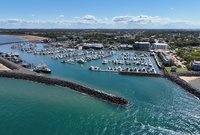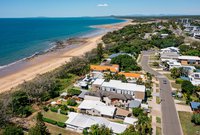Smart Moves Capital Cities Edition: 1st Half 2025
The PRD Smart Moves: Capital Cities Edition 1st Half 2025, are available for Brisbane, Sydney, Melbourne, and Hobart. These guides provide valuable insights on property trends and how current cash rate movements have impacted the market, as well as planned housing stock supply for 2025.
As featured on:

For those looking for more affordable options (compared to the capital city metro area), these guides provide key suburbs that have passed the affordability, investment, liveability, and future residential stock supply criteria.
Download:
PRD Smart Moves Capital City Edition Brisbane 1st Half 2025.pdf
PRD Smart Moves Capital City Edition Hobart 1st Half 2025.pdf
PRD Smart Moves Capital City Edition Melbourne 1st Half 2025.pdf
PRD Smart Moves Capital City Edition Sydney 1st Half 2025.pdf
Key Findings
- Units continue to provide more hope for Sydney, Brisbane, and Melbourne first home buyers. There is a stark contrast between the percentage of affordable suburbs in Sydney for houses, at 7.8%, and units, at 36.9%. The only exception to this rule is Hobart, where buyers have almost equal access to affordable suburbs for houses (42.9%) and units (41.0%).
- For the first time, Melbourne eclipsed Brisbane and Hobart in terms of having the highest percentage of affordable suburbs for units. Melbourne recorded 42.9% of affordable suburbs, much higher than Brisbane’s 38.7% and slightly higher than Hobart’s 41.0%.
- Compared to the 2nd Half 2024 report, the percentage of affordable suburbs has declined for all capital cities and almost all stock types. The largest decline is in Brisbane units. In the 2nd Half 2024 report, there were 60.3% affordable unit suburbs. This proportion has dramatically declined to 38.7%.
- As per the previous Affordable and Liveable Property Guide Series, we have had to sacrifice the unemployment rate in favour of ensuring a reasonable amount of ready-to-sell housing stock projects (most of which are units) and as much affordability as possible. This reflects the current tight labour market but also suggests first home buyers may need to travel longer distances to their jobs. This was particularly prevalent in Brisbane, followed by Hobart.
- Choosing an affordable and liveable suburb in Brisbane continues to be the most difficult, due to property price growth in most of Brisbane’s suburbs and a low level of new residential stock planned. Sydney and Melbourne proved easier, as many suburbs are still experiencing negative or low-price growth, yet with a higher level of new residential stock in the pipeline.
Percentage of Affordable Suburbs
Tables 1 and 2 illustrate the percentage of affordable suburbs in each capital city, where an “affordable suburb” is defined as a suburb with a lower median house or unit price than the relevant metro area. There is more hope for Melbourne unit buyers, eclipsing Brisbane and Hobart unit buyers for the first time. Hobart continues to claim its title as the most affordable capital city for house buyers.
Table 1. Percentage of Affordable Suburbs for Houses
Table 2. Percentage of Affordable Suburbs for Units
Metro median house/unit price are based on Corelogic Research, as of 1st May 2025. Affordable Suburbs are suburbs with a median house/unit price below the Metro median house/unit price. Number of Suburbs is the number of suburbs from CBD + 20km diameter. Source: CoreLogic 1st May 2025, APM Pricefinder.
Affordable & Liveable Suburbs
Table 3 identifies affordable and liveable suburbs that have met all methodology criteria.
Hobart still has the most affordable chosen suburbs for houses, followed by Melbourne. Brisbane is now the 2nd most expensive city for houses, especially for those that are also looking for liveability and the possibility of new housing stock. The prospect of this price growth slowing down is unlikely, due in part to the concentrated nature of new stock. That is, they are mostly found in suburbs that have a median house price closer to or higher than the Brisbane Metro median house price.
Chosen suburbs for units show median prices that are approximately on par between all four capital cities. That said, Brisbane’s most affordable unit prices are at times pricier than Sydney’s, due to ensuring there is a reasonable amount of ready-to-sell stock planned for construction in 2025. This is the same pattern as the 2nd Half 2024 report series, which suggests that to access new stock, Brisbanites must sacrifice affordability for availability.
For first-home buyers looking to maximise their opportunity, Melbourne units hold the lowest median price in Table 3. This result can be a surprise, as Melbourne is not originally known as an affordable capital city. However, due to Melbourne still being in a recovery phase and the ease of finding ready-to-sell housing stock projects for 2025, the city presents itself as a key opportunity for buyers.
Table 3. Affordable and Liveable Suburbs
Methodology
Each Affordable and Liveable Property Guide focuses on suburbs within a 20km radius of the CBD (or 10km for Hobart), considering the following criteria:
- Property trends criteria: all suburbs have a minimum of 20 sales transactions for statistical reliability purposes. Based on market conditions, suburbs have either positive or as close as possible to neutral price growth between the past 18 months and Q1 2025.
- Investment criteria: as of March 2025, suburbs considered will have an on-par or higher rental yield than the relevant metro area, and an on-par or lower vacancy rate.
- Affordability criteria: identified suburbs have a median price below the relevant capital city metro area and below a set threshold. This threshold was set by adding a percentage premium to the respective state’s average home loan***. The percentage premium needed to achieve the affordable and liveable suburb’s median house or unit price must be lower than the percentage premium needed to achieve the city metro area’s median house or unit price. This ratio ensures higher affordability.
- Development criteria: suburbs chosen have new project developments commencing construction for 2025, with a high proportion of commercial and infrastructure projects. This ensures the suburbs show signs of sustainable economic growth. Suburbs chosen must also show a reasonable amount of new ready-to-sell stock planned for construction to ensure buyers have access to new housing supply.
- Liveability criteria: all identified suburbs have low crime rates, availability of amenities within a 5km radius (i.e., schools, green spaces, public transport, shopping centres, and health care facilities), and an unemployment rate on par or lower in comparison to the QLD average (as determined by the Department of Jobs and Small Business, December Quarter 2024 release).
* Median price quoted captures sale transactions from 1st January 2024 to 31st March 2025, or Q1 2024 – Q1 2025.
** New Supply is based on aggregate number of ready-to-sell townhouses, units, dwellings scheduled to commence construction in 2025, as stated by the relevant data authority.
*** Average home loan figure is derived from March Quarter 2025 Housing Affordability Report by the Real Estate Institute of Australia (REIA) and Adelaide Bank.







